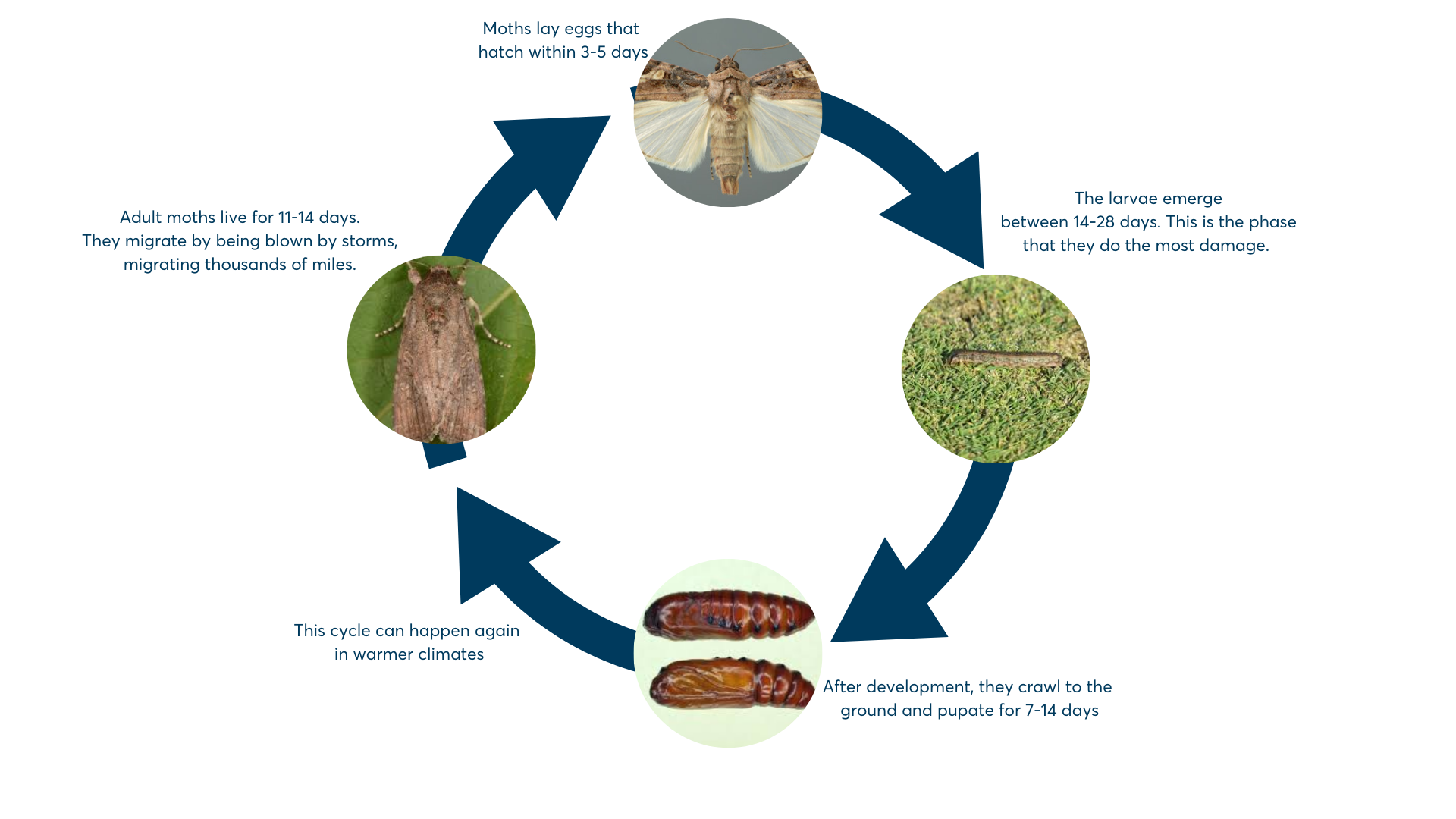Fall armyworms are a common and destructive pest that can wreak havoc on lawns and crops across North Carolina. These pests, named for their tendency to "march" in large numbers across fields, are particularly problematic during late summer and early fall. For homeowners, landscapers, and farmers alike, understanding their behavior, signs of infestation, and management strategies is key to protecting landscapes and agricultural investments. In North Carolina, you should scout for fall armyworms from July until the first frost in the fall. Fall armyworms are most active from August through October.
What Are Fall Armyworms?
Fall armyworms are the larvae of a moth species (Spodoptera frugiperda). These caterpillars are green to brown with a distinctive Y-shaped marking on their heads and stripes running down their sides. Adult moths lay their eggs on grass blades, and within days, these eggs hatch into hungry larvae that feed on various plants.
In North Carolina, warm temperatures and high humidity create ideal conditions for fall armyworms to thrive. They are particularly fond of turfgrass, such as Bermuda, fescue, and ryegrass, but they will also feed on crops like corn, sorghum, and alfalfa.
Signs of Fall Armyworm Infestation
Rapid Damage: One of the most frustrating aspects of fall armyworms is their ability to destroy landscapes almost overnight. Patches of grass may appear brown or scalped, as though the area has been mowed too low.
Visible Larvae: You may see the caterpillars themselves, particularly in the early morning or late evening when they are most active.
Increased Bird Activity: Birds, particularly grackles or starlings, may gather on lawns infested with armyworms, as they feast on the caterpillars.
Chewed Grass Blades: Close inspection may reveal grass blades that are ragged and chewed, a telltale sign of feeding.
Why Are Fall Armyworms a Problem?
Fall armyworms can quickly decimate turfgrass, leaving behind brown, dead patches that require time and effort to repair. In severe infestations, they can even consume entire lawns or crops. While warm-season grasses like Bermuda can often recover with proper care, cool-season grasses may suffer long-term damage, especially in areas where the root systems have been destroyed.
How to Manage Fall Armyworms
Monitor Regularly: During peak season (August to October), inspect your lawn or crops frequently for signs of damage. Early detection is crucial.
Use Soapy Water Test: If you suspect an infestation, mix water and dish soap and pour it onto a patch of grass. This will force armyworms to surface, making them easier to spot.
Apply Insecticides: Products containing active ingredients like bifenthrin, carbaryl, or spinosad can effectively control fall armyworms. Always follow label instructions for safe and effective use.
Encourage Natural Predators: Birds, beneficial insects like parasitic wasps, and predatory beetles can help reduce armyworm populations naturally.
Maintain Lawn Health: A healthy lawn is better equipped to recover from armyworm damage. Fertilize and water appropriately to strengthen turfgrass.
By staying vigilant and taking proactive steps, you can minimize the damage caused by fall armyworms and protect your lawn and crops. Although these pests are a seasonal nuisance, with the right strategies, you can keep your North Carolina landscape healthy and beautiful.
